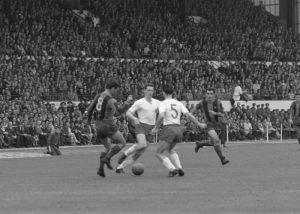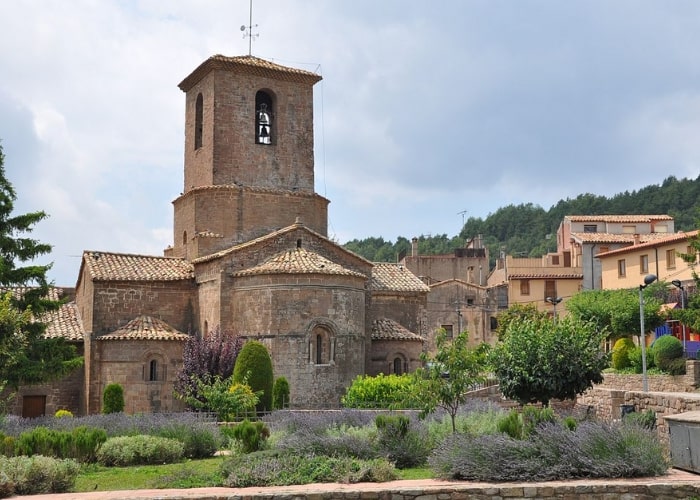‘You have to know the past to understand the present’, said Carl Sagan. This phrase does apply to certain issues more than to others. In Spain you can hardly understand the quest for independence of Catalonia if you don’t know the history of this autonomous community. Catalonia has played an important role in Spanish history since the Middle Ages, as have the medieval power blocs of Aragon and Castile. We have divided this history in 4 chronological timeframes. This is part 4 about the 20th century and now. If you have missed part 1, click here.
20th Century
Catalan nationalism lived mainly among the middle class that wanted to implement changes from within the establishment without violence. As such, part of Catalan Solidaridad, the conservative Lliga Regionalista achieved success in local and regional elections from 1908 onwards. However, Catalanism continued to have problems with its left-wing over the years. This was mostly made up of republicans, known for its split-offs and groups that overlapped thoughts with socialism and anarchism. Also, the multitude of general strikes and political assassinations fueled the opposition between the working class and the middle class in Catalonia throughout the 20th century. The bourgeoisie had to choose between two evils and embraced the Spanish dictator Primo de Rivera in 1923. With his arrival, Catalanism and many of its cultural expressions were suppressed.
“Spanishise” Catalonia
After the fall of Primo de Rivera, Catalonia again received more autonomy during the Second Spanish Republic (1931 – 1939) through its own statute and the Generalitat was restored. Additionally, in the civil war (1936 – 1939) Catalonia fought hard, just like the Basque Country, to preserve the Spanish republic. With the victory of General Franco’s right-wing troops, autonomies were abolished and regional languages banned. Furthermore, nationalism was a matter for the central state, regional language, culture and identity were ruthlessly suppressed. Franco’s aim was to “Spanishise” Catalonia.
Many Catalans were imprisoned for years

Despite the harsh repression, Catalans continued to speak their own language in domestic circles. For example, the stadium of Barcelona football club, Camp Nou (our pitch), was one of the few public places where Catalans could feel at one. And even sometimes indirectly, express themselves as Catalans. After the civil war, the years were tough for the Catalans, as they were the losers. Additionally, there was a shortage of food and fuel, and infant mortality was particularly high due to the cold. Also, many Catalans were imprisoned for years after the war and returned to society with rancor and no future. Whereas thousands of others lived in exile during the dictatorship of Franco.
Increased tourism and industrial development
Economically, Catalonia suffered the consequences of the civil war and the international trade boycott against fascist Spain. However, in the 1960s and 1970s Spain freed itself somewhat from its political and economic isolation. And in particular, Catalonia benefited greatly from increased tourism and industrial development. Catalonia became one of the industrial focal points of Europe. As such, many unemployed people immigrated from elsewhere in Spain, another form of Españolisation of Catalonia.
Franco’s death and 20th century democracy
Franco died in 1975 and in 1978 a new constitution was passed that divided Spain into Comunidades Autonomous (CCAA). Autonomous regions in which Catalonia had a high degree of self-government and guarantees regarding the own language. Furthermore, in 1979 the Generalitat was reinstated.
The first democratic elections after Franco’s death in Catalonia were won by Jordi Pujol who would remain in power until 2003 as founder and leader of the center-right CiU (Convergencia I Unió). This was an alliance between his own CDC (Convergencia Democratica Catalunya) and UDC (Unió Democratica Catalunya). Also, regional parties ruled the regions but had representation in Madrid as well.
Additionally, the Catalan nationalists managed to claim an important role between 1993 and 2000 by helping Felipe Gonzalez (PSOE) and José Maria Aznar (PP) respectively to a majority. After 2003, CiU lost its majority in the Catalan Parliament, and left-wing coalitions were formed in 2003 and 2006 with PSC (Partido Socialista Catalunya, the Catalan PSOE), ERC (the Catalan Republicans), and ICV (the Catalan Green Party).
Catalonia and the Spanish government
The conflicts between Catalonia and the Spanish government have still not ended. Resulting in October 2017, when Catalan regional president Carles Puigdemont was impeached after the Catalan Parliament declared independence on 27 October 2017. This concluded in the Spanish government imposing direct rule on Catalonia, dismissing Puigdemont and the Catalan government.
 The Catalan Parliament was dissolved and the 2017 Catalan regional election was held. On 30 October 2017 charges of rebellion, sedition, and misuse of public funds were brought against Puigdemont and other members of the Puigdemont government. Puigdemont, along with others, fled to Belgium and European Arrest Warrants (EAW) were issued against them. Other members of his government and some political leaders are still in prison.
The Catalan Parliament was dissolved and the 2017 Catalan regional election was held. On 30 October 2017 charges of rebellion, sedition, and misuse of public funds were brought against Puigdemont and other members of the Puigdemont government. Puigdemont, along with others, fled to Belgium and European Arrest Warrants (EAW) were issued against them. Other members of his government and some political leaders are still in prison.
The quest for independence
The ongoing quest for independence has thus created new history over the past 10 years and will continue to do so. Especially if it is up to the political leaders of the independence movement and their supporters. Therefore, current Catalonia is still struggling with the consequences op history.


